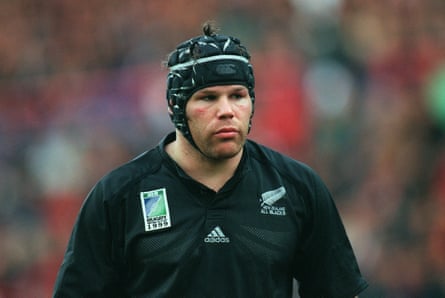
Another Lions tour added to the annals, and everyone is more or less happy. The British & Irish Lions take a series win, just about, and Australia have a pivotal moment at the end of the second Test to whinge about, or console themselves over, depending on your viewpoint.
Certainly, these days, it is difficult to know what disciplinary outcome may pertain to each incident in the cut and thrust of elite rugby. Most people with eyes can appreciate there was no head contact when Jac Morgan tried to clear out the jackling Carlo Tizzano in the buildup to Hugo Keenan’s winning try, but there is no doubt, either, that Tizzano was in an exposed position, just as that particular split-second represented an impossible situation for Morgan. Had he gone any lower he would have made contact with the head, higher and he would have missed the clearout altogether.

Which feels about right.
This is not to say no one ever went for the ball after a tackle in the amateur era, but there was not a name for the practice, and the window of opportunity was brief, with “hands off” called the moment an opponent bound on to form a ruck.
There are two main arguments for querying the jackal’s pervasiveness in the modern game. The first is a safety matter, although why we should pick on that area above any other is not obvious. Rugby is a dangerous game. The sooner the authorities recognise that by reserving their sanctions for deliberate acts of recklessness, the fewer impossible disciplinary quandaries there will be to resolve.
Jacklers, though, do place themselves in vulnerable positions – and it is not just the head that is exposed. A team doctor in the Premiership mused about 15 years ago that there was a new injury in rugby, which had been seen previously only in surfing, when the surfer is hit by a wave while crouched on the board. That injury, a serious one, is called an avulsion, when the hamstring is torn from the bone, and it is the jackler who suffers it if hit hard enough by a clearout.
after newsletter promotion
So much for the safety. There is also a compelling argument on rugby grounds. The great poser these days is how to get players back into the ruck. The game has never been more vibrant and entertaining on the field, but insofar as there are bad games, which of course there are, they usually play out to the relentless thud of hit-up after hit-up as defenders fan across the field. The main reason they can do that is that they need to send only one player in at every tackle to jackal, who in turn invites two or three of the attacking side to clear out, thus tilting the balance beyond the ruck in favour of the defending side.
Make it illegal to use hands after the tackle, so the theory goes, and the ruck will become the primary contest for the ball at each tackle. A turnover can be won when the first defender steps over the ball. Thus teams will need to resource the rucks if they want to maintain possession or win it back. That should create space elsewhere.
It sounds reasonable, but there will almost certainly be downsides, as there always are in rugby’s eternal quest for the perfect set of laws. A personal view is that far too much latitude has been extended to the jackler, who is now granted rights to handle the ball, if the first one there, long after any ruck has formed. At the very least, rugby might consider a return to what used to be lore: that all hands come off the moment a ruck is formed.
A happy side-effect might be to calm the ardour of the clearout, where players almost panic at the sight of a jackler and charge in desperation. Any situation that permits a defender to put the attacking side in an impossible situation needs reviewing. The jackler is a prime example. Coming to a law trial near you …
-
This is an extract taken from our weekly rugby union email, the Breakdown. To sign up, just visit this page and follow the instructions.




